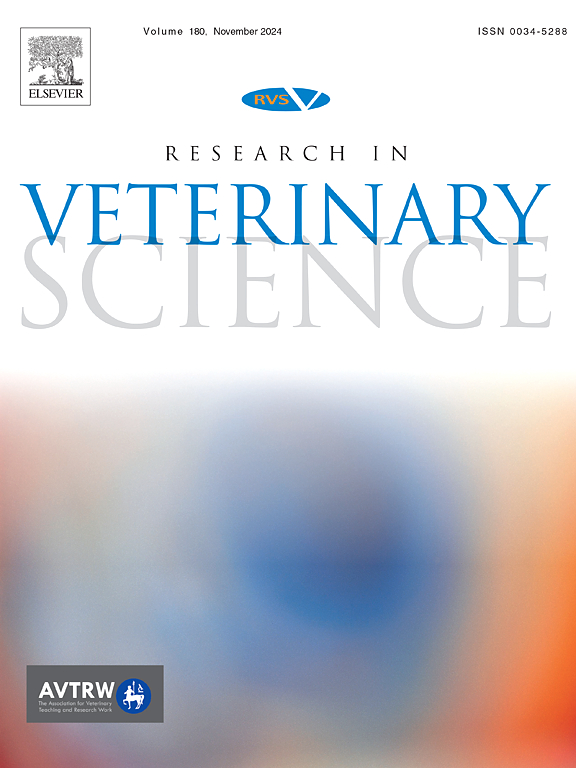犬牙周韧带干细胞作为牙周再生的工具
IF 2.2
3区 农林科学
Q1 VETERINARY SCIENCES
引用次数: 0
摘要
犬牙周病是一种进行性和不可逆的疾病,影响着牙齿健康,对兽医医学提出了重大挑战。虽然目前的治疗重点是控制进展,但犬牙周韧带干细胞(cPDLSCs)通过其自我更新能力、干细胞标记物的表达和多谱系分化提供了再生潜力。自体cPDLSCs已经成功地再生了牙槽骨、骨质和Sharpey’s纤维,而同种异体细胞移植已经证明了免疫调节的益处,而不会引发炎症反应。cPDLSCs还显示出在实验诱导的犬牙周病中减轻炎症和促进再生的潜力。尽管临床前结果令人鼓舞,但临床研究有限、疾病可变性、成本高、所有者意识低等挑战阻碍了cPDLSCs在兽医牙科临床环境中使用的进展。推进临床兽医科学需要对患有自然发生的牙周病的狗进行临床试验。跨学科合作可以降低成本并扩大对这些研究的获取。此外,教育宠物主人关于卫生习惯,早期疾病检测和再生疗法的优势将增加他们的依从性并改善结果。最终,通过现实世界的研究弥合研究和临床应用之间的差距,对于促进狗的可及和有效的牙周治疗至关重要。我们的综述旨在探索cPDLSCs在体外和体内的潜力,促进对牙周微环境的认识,并为创新的再生治疗铺平道路。本文章由计算机程序翻译,如有差异,请以英文原文为准。
Canine periodontal ligament stem cells as a tool for periodontal regeneration
Canine periodontal disease, a progressive and irreversible condition, impacts dental health, posing a significant challenge in veterinary medicine. While current treatments focus on managing progression, canine periodontal ligament stem cells (cPDLSCs) offer regenerative potential through their self-renewal capacity, expression of stemness markers and multilineage differentiation. Autologous cPDLSCs have successfully regenerated alveolar bone, cementum, and Sharpey's fibres, while allogeneic cell transplants have demonstrated immunomodulatory benefits without triggering inflammatory reactions. cPDLSCs also show potential for mitigating inflammation and promoting regeneration in experimentally induced canine periodontal disease. Despite promising preclinical results, challenges such as limited clinical studies, disease variability, high costs, and low owner awareness hinder progress in the use of cPDLSCs in veterinary dental clinical settings. Advancing clinical veterinary science requires conducting clinical trials involving dogs with naturally occurring periodontal disease. Interdisciplinary collaboration can lower costs and expand access to these studies. Additionally, educating pet owners about hygiene practices, early disease detection, and the advantages of regenerative therapies will increase their compliance and improve the outcomes. Ultimately, bridging the gap between research and clinical application through real-world studies is essential for advancing accessible and effective periodontal therapies for dogs. Our review aims to explore the potential of cPDLSCs in both in vitro and in vivo contexts, advancing knowledge of the periodontal microenvironment and paving the way for innovative regenerative therapies.
求助全文
通过发布文献求助,成功后即可免费获取论文全文。
去求助
来源期刊

Research in veterinary science
农林科学-兽医学
CiteScore
4.40
自引率
4.20%
发文量
312
审稿时长
75 days
期刊介绍:
Research in Veterinary Science is an International multi-disciplinary journal publishing original articles, reviews and short communications of a high scientific and ethical standard in all aspects of veterinary and biomedical research.
The primary aim of the journal is to inform veterinary and biomedical scientists of significant advances in veterinary and related research through prompt publication and dissemination. Secondly, the journal aims to provide a general multi-disciplinary forum for discussion and debate of news and issues concerning veterinary science. Thirdly, to promote the dissemination of knowledge to a broader range of professions, globally.
High quality papers on all species of animals are considered, particularly those considered to be of high scientific importance and originality, and with interdisciplinary interest. The journal encourages papers providing results that have clear implications for understanding disease pathogenesis and for the development of control measures or treatments, as well as those dealing with a comparative biomedical approach, which represents a substantial improvement to animal and human health.
Studies without a robust scientific hypothesis or that are preliminary, or of weak originality, as well as negative results, are not appropriate for the journal. Furthermore, observational approaches, case studies or field reports lacking an advancement in general knowledge do not fall within the scope of the journal.
 求助内容:
求助内容: 应助结果提醒方式:
应助结果提醒方式:


